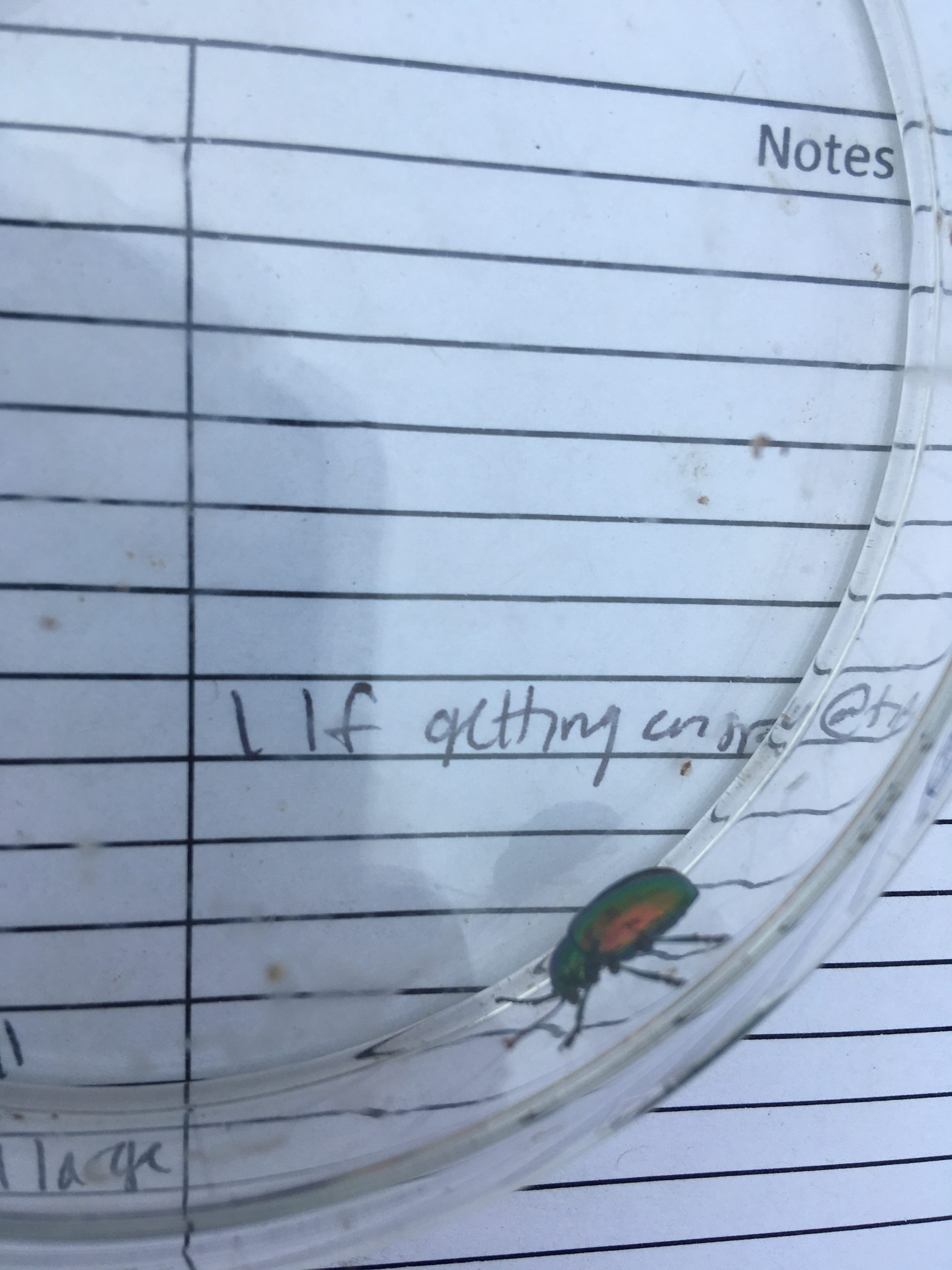Team Echinacea continued the aphid addition and exclusion experiment started in 2011 by Katherine Muller. The original experiment included 100 plants selected from exPt01 which were each assigned to have aphids either added or excluded through multiple years. The intention is to assess the impact of the specialist herbivore Aphis echinaceae on Echinacea fitness.
In 2021, the aphid addition and exclusion project was conducted by Allie Radin with occasional help from other field crew members (often Emma Reineke). They located 26 living exclusion plants and 17 living addition plants. The experiment was conducted from July 9th to July 23rd, with the final visit consisting only of searching for aphids. No aphids were seen or moved in exPt01 this year.
Once again, there were very few aphids (actually, none) in exPt01. This is the second year in a row of missing aphids, raising other questions about where the aphids have gone, let alone their impact on the Echinacea plants. Allie and the team searched the experimental plot thoroughly to make sure no potential aphid hiding spot was left unturned. This included large plants from this year and last year, this year’s flowering plants, and plants which had aphids in previous years. Despite low aphid numbers, other insects such as beetles and thrips were present in the plot.
- Start year: 2011
- Location: Experimental Plot 1
- Overlaps with: Phenology and fitness in P1
- Data collected: Scanned datasheets are located at ~Dropbox\aphidAddEx\aphids2021
- Samples collected: NA
- Products:
- Andy Hoyt’s poster presented at the Fall 2018 Research Symposium at Carleton College
- 2016 paper by Katherine Muller and Stuart on aphids and foliar herbivory damage on Echinacea
- 2015 paper by Ruth Shaw and Stuart on fitness and demographic consequences of aphid loads
You can read more about the aphid addition and exclusion experiment, as well as links to prior flog entries mentioning the experiment, on the background page for this experiment.


Leave a Reply